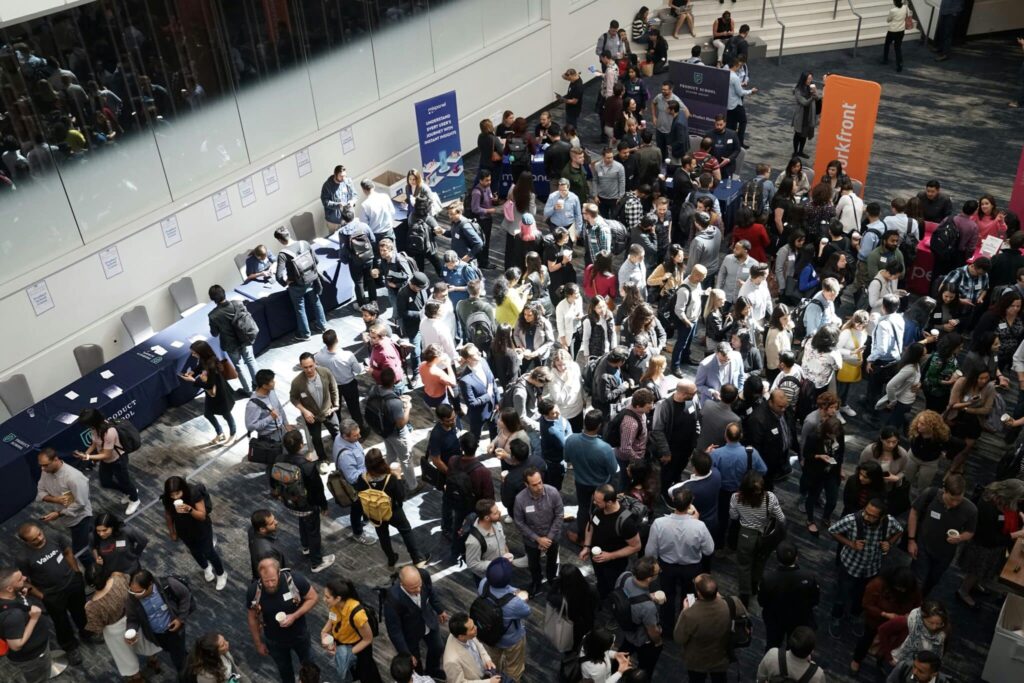In the age of webinars and virtual meetings, is investing in traditional trade fairs still worthwhile? This question takes on special significance at a time when the business world has grown accustomed to operating remotely. On one hand, digital tools allow us to reach a wide audience quickly and at lower costs. On the other hand, more and more brands are realizing that nothing can replace direct contact, a handshake, and a face-to-face conversation.
In this article, we’ll explore how the role of trade events is changing in the digital age, whether it’s still worth investing in offline presence, and why — despite technological advances — trade fairs remain an irreplaceable element of many companies’ marketing strategies.

Just a decade ago, offline events were the undisputed king of B2B marketing strategies. Today, as the world has shifted to remote mode and platforms like Zoom and Teams have become everyday tools, many ask themselves: does this still work? Is it worth allocating budget, time, and resources to physical attendance when everything can seemingly be done online?
But the answer is neither simple nor clear-cut. Because although digital tools have revolutionized communication, trade fairs have not only survived — in many sectors, they have gained importance, with digitalization accelerating their development.
In an era where nearly everything is available with a single click, physical presence has taken on new value. For many companies, participating in trade fairs is not just about promotion — it’s a market presence strategy, a demonstration of competence, and even an industry ritual.
Here are the main reasons why trade fairs remain effective:
When comparing trade fairs to online events, it’s clear that both formats have unique strengths — and limitations. Trade fairs offer direct, physical contact with products that can be touched, tested, and experienced with all the senses — something virtual versions cannot provide. On-site networking is natural, spontaneous, and typically leads to long-lasting relationships. Coffee chats, exchanging business cards, handshakes — all of it builds trust that’s difficult to establish over a screen.
However, costs cannot be ignored. Organizing a trade fair booth comes with higher expenses — transport, logistics, accommodations, and staff time. Online events, on the other hand, are far more budget-friendly, although their impact is often less lasting. Trade fair experiences tend to stay in memory longer — thanks to emotions, personal engagement, and the event atmosphere. Meanwhile, digital events, despite their global reach and easy accessibility, often feel anonymous and are quickly forgotten.
In short, offline events win where authenticity, relationships, and experience matter. Online events work well as a supplement to a strategy, but rarely as a full replacement.
While traditional trade fairs are still around, many are evolving. Hybrid events are emerging, combining physical attendance with online streaming. This allows access for both in-person attendees and a global audience.
Additionally, more and more events are investing in interactive booths, immersive technologies (AR/VR), and eco-friendly, zero-waste solutions — meeting new participant expectations.
A well-planned event can be the highlight of a marketing campaign. It’s worth integrating it with online activities:
You can find more about using social media to promote your trade fair booth in our previous article: How to Use Social Media to Promote Your Trade Show Booth.
Trade fairs won’t disappear, but they will evolve. In the future, even greater emphasis will be placed on participant experience (customer experience). Booths will resemble immersive spaces more than traditional displays, combining technology, design, and storytelling.
It’s also worth preparing for:
In the digital age, live industry events are not losing relevance — they’re gaining a new dimension. They are no longer just places for presentations but have become spaces for dialogue, inspiration, and brand experience. When combined with online activities, they can become a powerful sales and branding tool.
So, if you’re wondering whether it’s worth investing in being an exhibitor, the answer is: yes — as long as you do it right. Do you want your trade show booth to tell your brand’s story, attract attention, and be memorable? Contact us! At Clever Frame, we help create unforgettable trade show experiences.